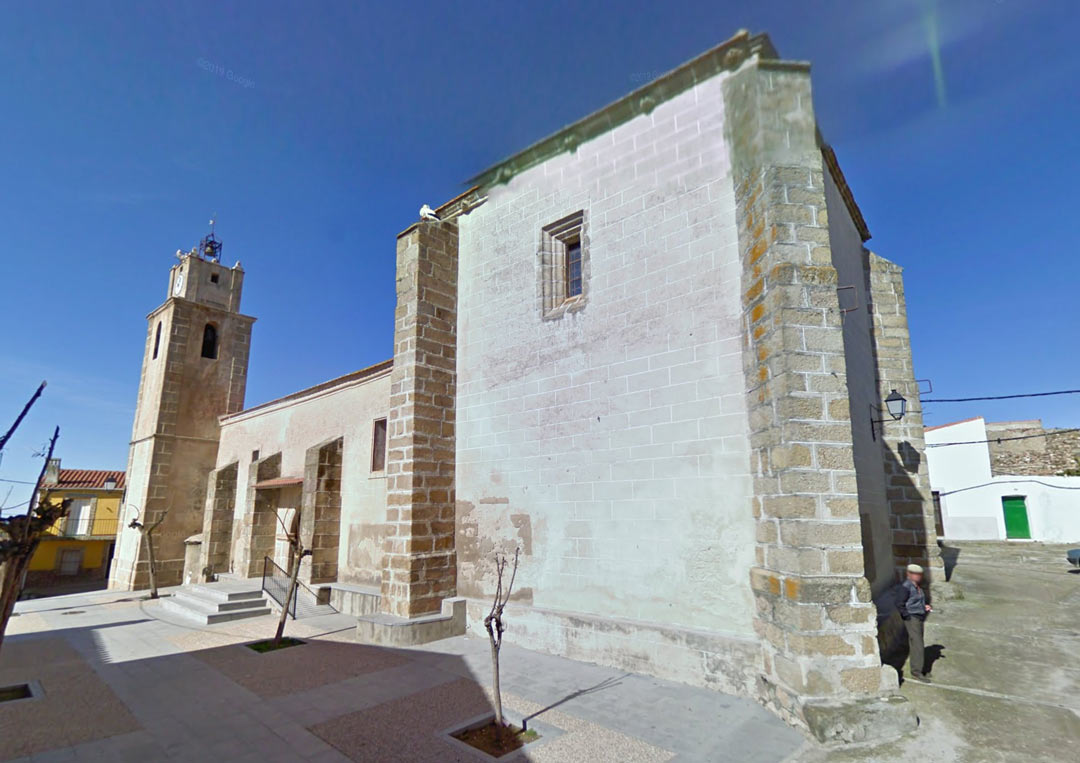Piedras Albas
A journey to the past on the border with Portugal
Contact
Piedras Albas Town Hall
Calle Aduana, 2
10991 Piedras Albas, Cáceres (Extremadura)
Piedras Albas, on the border with Portugal, is situated on the southern slope of the so-called Cerro del Castillo between the Erjas and Alagón Rivers and crowned by huge blocks of white quartzite which probably gave the village its name. It is difficult to date its origins but documents can be traced which point to a pre-Celtic past when it was known as Elbocoris according to some authors such as Martín Almagro-Gorbea in his “The Central Interior of Portugal and the origin of the Lusitanians“.
According to oral tradition, in prehistoric times there were settlements around the “Canchal de los dos Ojos or Peña Buraca“. It is thought that this hill at the foot of which the village is located formerly held a Neolithic settlement which was converted firstly into an Arab fortress and then into a Christian one. The Arabs left their mark in the area above the site of “The Castle”, formerly an area of vines and of which now only pink and white blocks of stone remain. Signs of Roman times include presses for both oil and olive production, the Roman road which linked Corduba (Córdoba) with Portus Cale (Oporto), and the Segura Bridge.
Curious fact:The Spanish light opera “Luisa Fernanda” was written in the village and part of the action occurs in the vicinity of the Spanish-Portuguese border on an estate called La Puente.
This musical comedy in three acts by Federico Moreno Torroba and with libretto by Federico Romero Sarachaga and Guillermo Fernández-Shaw Iturralde was first performed at the Calderón Theatre in Madrid on 26th March 1932 and according to some sources has now been staged over 10,000 times. It was the fourth light opera by Torroba and his first big success. Its action begins in the city of Madrid during the reign of Isabel II just prior to the revolution of 1868 and ends in a house in Extremadura after her dethronement.
The coat of arms of the village features a silver wall symbolising the fortress and above it the cross of the Order of Alcántara, which shows that the village belonged to said Order.
You can’t leave without seeing…
This prehistoric sanctuary has been declared an Asset of Cultural Interest in Extremadura under the category of Archaeological Area. Of magical appearance, it is a unique place which owes its name to two large cavities which recall two huge eyes (“ojos”) and has still to reveal many of its secrets as it occupies a surface area of four hectares with abundant archaeological remains.
The Peña Buraca is surrounded by hundreds of rock tombs, some of which show a lowering of the head; there is even a tomb with two openings designed to accommodate the elongation of the head and the feet, geminated tombs for children, and anthropomorphous tombs.
A trail runs through the dehesa of common land to the Roman bridge of Segura which stands astride the River Eljas. It is also affectionately known as the “Little Bridge” as a clear allusion to its big brother at Alcántara. Indeed it appears to be a replica of the latter as the same architectural techniques were followed in its construction since it was built by the same engineer Gaius Julius Lacer.
It has five uneven spans with round arches on four quadrangular pillars with keeled cutwaters. It has the special honour of being the most international bridge in the district as the divide between Spain and Portugal is right in the middle of the road which crosses it. It is a frontier link of the Ruta de la Lana (Wool Route) and bore the Roman road leading to Portus Cale (Oporto).
It belongs to the archpriestship and diocese of Coria. It is Gothic in style and the oldest part is that of the chancel which dates from the second half of the 16th century. The first section of the nave was built between 1630 and 1650 and the remainder of the church was constructed in the second half of the 17th century. Moreover, a choir and a tower can also be found at the southwest angle.





